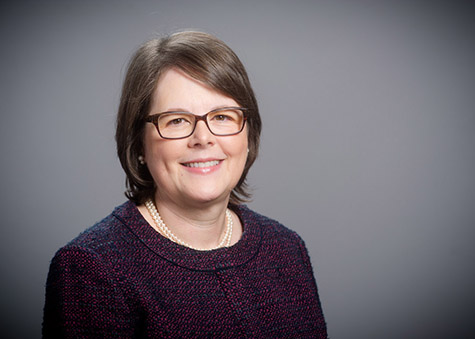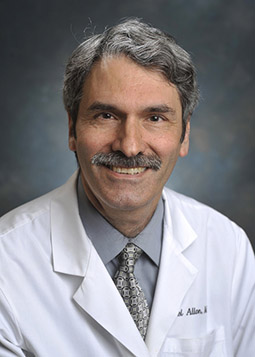 Michelle Robbin, M.D.For more than 20 years, Michael Allon, M.D., and Michelle Robbin, M.D. — along with Carlton Young, M.D., and interventional radiology colleagues in the University of Alabama at Birmingham School of Medicine divisions of Nephrology and Transplantation, and the Department of Radiology — have collaborated to improve the care of end-stage kidney disease patients who are on hemodialysis.
Michelle Robbin, M.D.For more than 20 years, Michael Allon, M.D., and Michelle Robbin, M.D. — along with Carlton Young, M.D., and interventional radiology colleagues in the University of Alabama at Birmingham School of Medicine divisions of Nephrology and Transplantation, and the Department of Radiology — have collaborated to improve the care of end-stage kidney disease patients who are on hemodialysis.
One vexing problem they face is trying to form fistulas in the arms of kidney-failure patients, in preparation for initiating dialysis.
“People with end-stage renal disease do dialysis for four hours, three days a week,” said Robbin, a professor of radiology and chief of Ultrasound. “The problem with fistulas is about 50 percent of them fail to mature, so they are not usable for dialysis. Nobody knows the right answer yet as to how to create a fistula that will work every time.”
Hemodialysis requires a high blood-flow rate from the patient to the dialysis machine, where the blood is purified and excess fluid removed. Veins are normally too small and thin to support this high rate, and arteries deep in the arm are not easy to reach. So in the weeks or months before patients need to begin hemodialysis, surgeons attempt to create an arteriovenous fistula — a surgical connection between an artery and a vein — in the patients’ arms. Higher blood pressure from the artery connection helps thicken the walls of the vein; in four to six weeks — if the fistula is successful — the vein can tolerate the stress of dialysis.
According to the National Institutes of Health, 468,000 Americans are kidney dialysis patients.
Over the years, Robbin and Allon, a professor of nephrology with a research focus on clinical dialysis, and their surgical and interventional colleagues have contributed substantially to the evaluation and treatment of dialysis patients. One example is a recent, multicenter NIH-funded clinical research publication using post-operative ultrasound imaging to predict fistula maturation success.
The researchers followed 602 fistula surgery patients in an observational study — using ultrasound imaging at one day, two weeks and six weeks after surgery. The question was whether some or any of 14 different variables, including seven case-mix factors like age, sex, race and body mass index, correlated with later fistula success.
To their surprise, just three of the variables moderately, but significantly, predicted successful arteriovenous fistula maturation — those three were arteriovenous fistula blood flow, fistula diameter and fistula depth. None of the other factors improved prediction.
 Michael Allon, M.D.By providing probabilities of maturation, the ultrasound measurements can “facilitate decisions by the clinician, such as the need for surgical or percutaneous intervention or abandonment of the arteriovenous fistula,” Robbin said. “The richness of the present data will also be highly valuable for practice guideline workgroups to formulate recommendations, taking into account other factors such as invasiveness of the remedial procedures, burden to the patient, costs and differences in process of care in individual centers.”
Michael Allon, M.D.By providing probabilities of maturation, the ultrasound measurements can “facilitate decisions by the clinician, such as the need for surgical or percutaneous intervention or abandonment of the arteriovenous fistula,” Robbin said. “The richness of the present data will also be highly valuable for practice guideline workgroups to formulate recommendations, taking into account other factors such as invasiveness of the remedial procedures, burden to the patient, costs and differences in process of care in individual centers.”
“It would be ideal,” Robbin said, “to tell the surgeon and clinical team, based on the six-week ultrasound, ‘this fistula has a high chance of maturation without intervention,’ or conversely ‘this fistula will not mature without intervention.’ But we still don’t know all the answers, and further research is needed into the problem of fistula maturation.”
The study, “Prediction of arteriovenous fistula clinical maturation from postoperative ultrasound measurements: Findings from the Hemodialysis Fistula Maturation Study,” was published online ahead of print in the Journal of the American Society of Nephrology.
Co-authors with Robbin and Allon are Tom Greene, Alfred K. Cheung and Yan-Ting Shiu, University of Utah, Salt Lake City; Laura M. Dember and Harold I. Feldman, Perelman School of Medicine, University of Pennsylvania, Philadelphia; Peter B. Imrey, Milena K. Radeva and Gerald J. Beck, Cleveland Clinic, Cleveland; Jonathan Himmelfarb, University of Washington, Seattle; Thomas S. Huber, University of Florida College of Medicine, Gainesville; James S. Kaufman, New York University School of Medicine, New York; Prabir Roy-Chaudhury, University of Arizona College of Medicine, Tucson; Miguel A. Vazquez, University of Texas Southwestern Medical Center, Dallas; Heidi R. Umphrey and Carl Abts, UAB Department of Radiology; Lauren Alexander, Mayo Clinic, Jacksonville, Florida; John W. Kusek, National Institute of Diabetes and Digestive and Kidney Diseases, Bethesda, Maryland; and the Hemodialysis Fistula Maturation Study Group.
This study was supported by National Institutes of Health grants DK082179, DK082189, DK082218, DK082232, DK082236 and DK082240.